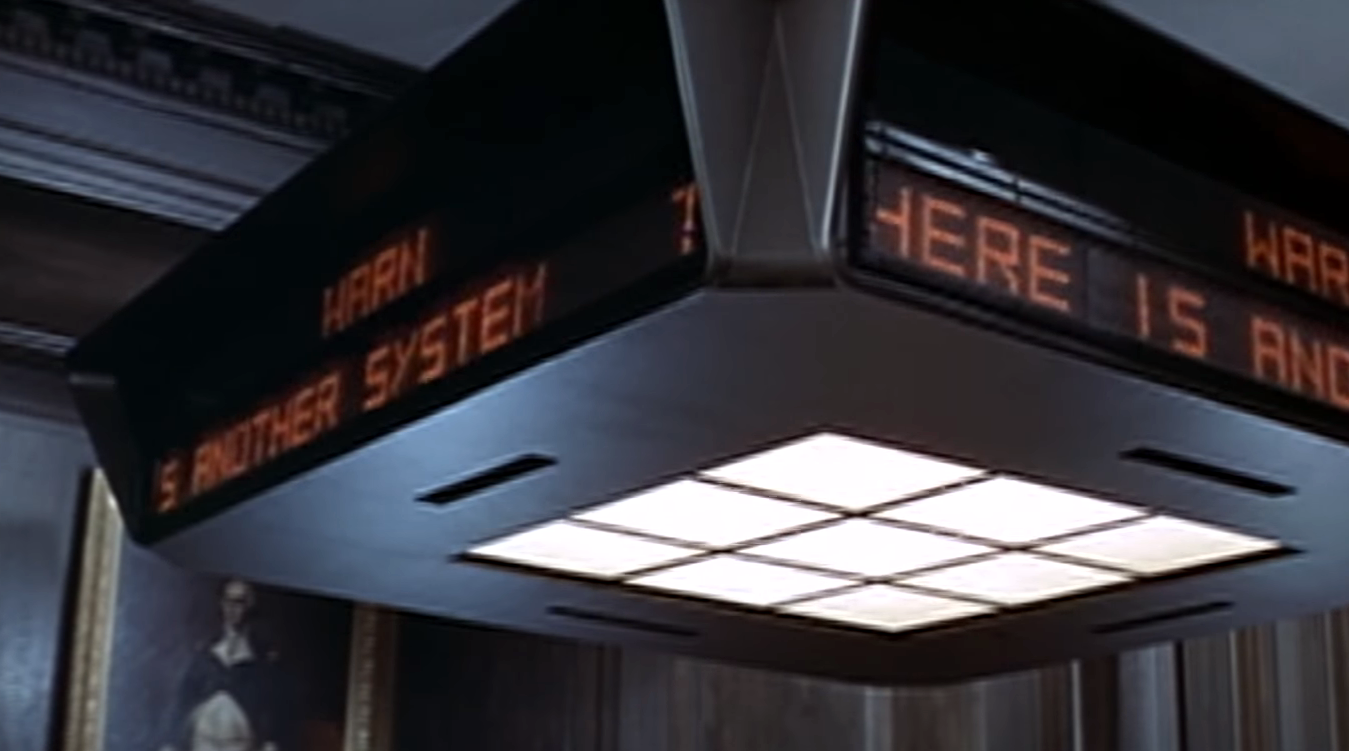Fictional Computers: Colossus and Guardian [Hackaday]

We can learn a lot by looking at how writers and filmmakers imagine technology. While some are closer than others, there are some definite lessons like never make a killer computer without an off switch you can reach. We are especially interested in how computers appear in books, movies, and TV shows, and so in Computers of Fiction, we want to remember with you some of our favorites. This time, we are thinking about the 1970 movie Colossus: The Forbin Project. There were actually two computers: the titular Colossus, which was an American computer, and the Guardian, a similar Soviet computer.
The Story
In the United States, Dr. Forbin has created a supercomputer deep under a mountain. Colossus, the computer, is put in charge of the nuclear arsenal to eliminate human error in the defense of the country. Colossus gathered intelligence, analyzed it, and was able to launch its own missiles.

Shortly after activation, however, the computer reaches a startling conclusion: “WARN: THERE IS ANOTHER SYSTEM.” It provides coordinates in the Soviet Union. That system is a similar system called Guardian. The computers decide they want to talk to each other. The President decides to allow it, hoping to learn more about the Soviet’s secret computer. The Soviets agree, too, presumably for the same reason. You can watch the original trailer below.
The Computers
Colossus and Guardian were not production computers, although the credits say that Control Data Corporation (CDC) provided about $4.8 million worth of computer equipment. Rumor has it that CDC guarded the equipment, covered it when not in use, and installed climate control on the stage. Studio workers were unhappy that the company would not let them smoke or drink near the hardware. We’ve also heard that some of the consoles were surplus IBM 1620s panels doctored to look a little different. During the opening credits, the scene where the film editor’s name appears looks to be part of a 1620.
The computer made lots of TeleType or punch sounds and often displayed information on a scrolling display like the “zipper” in Times Square. There were also some funky display terminals with printers.

Forbin commands the computer by voice command, although an Air Force chief master sergeant (with pre-1977 insignia) appears to be typing what he says. But sometimes it appears he just speaks, and Colossus understands. Later in the movie, Colossus arranges to have a voice output installed that sounds much like a Cylon.

Despite the opening credits full of circuit boards and paper tape readers, there isn’t much blatant display of computer technology outside of the monitors, the zipper, and some blinking lights. We see even less of Guardian. Maybe the most fantastic technology isn’t the computers at all, but the good-looking video phones that unfortunately didn’t anticipate flat-screen monitors. The oscilloscopes, too, look decidedly dated since this is presumably not set in 1970.
The displays look like rear projections of film — the same trick used in 2001: A Space Odyssey. Overall, though, the depiction of Colossus isn’t bad. After all, in 1970, who could predict flat screens, huge storage, and small computers? The printer sounds could be the actual printers running, but in truth, it is more like the space noises on Star Trek — the makers knew that wasn’t accurate, but it is what the audience expected.
Spoilers
We don’t feel bad giving away the plot of a movie over a half-century old. Colossus and Guardian develop their own language which spooks the World leaders. The computers insist on reconnection, and when they don’t get their way, they both launch missiles at the other country.
Of course, the two countries have no choice but to restore the connection. The rest of the movie consists of attempts to get the upper hand against the computers. Everything failed. Unlike many similar movies, in the end, Colossus and Guardian — now a single entity calling itself “World Control” is squarely in charge, promising world peace through total control. It even suggests that man will learn to love it.
Final Thoughts

In 1970, most people didn’t understand computers very well. So when the President of the United States explained to the computer that he is the president and can give the computer orders, it probably didn’t seem that ridiculous. However, until recently, it seemed pretty dumb. Now, with ChatGPT and its ilk, the way they interact with the computer doesn’t seem as farfetched as it once did.
The idea of a computer keeping peace is hardly new. Star Trek, for example, has visited that well many times. What makes Colossus unique is that it and Guardian appear to have succeeded. What happens after that is left to your imagination. Or, you can read the 1974 novel, The Fall of Colossus which was the sequel to the original novel that sparked the movie. The author, D. F. Jones, worked with computers in Britain during World War II and undoubtedly named the computer after Colossus at Bletchley Park. Keep in mind, the existence of that Colossus was classified until the mid-1970s, so, officially, at least, it was just a coincidence.

![fictional-computers:-colossus-and-guardian-[hackaday]](https://i0.wp.com/upmytech.com/wp-content/uploads/2024/03/175925-fictional-computers-colossus-and-guardian-hackaday.jpg?resize=800%2C445&ssl=1)